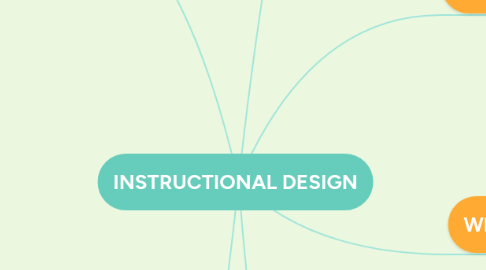
1. How
1.1. ADDIE
1.1.1. Analyse
1.1.1.1. Design
1.1.1.2. Audience
1.1.1.3. Goal
1.1.1.4. Objectives
1.1.1.5. Identify content
1.1.1.6. Identify environment and delivery
1.1.1.7. Instructional strategies
1.1.1.8. Assessment strategies
1.1.1.9. Formative evaluation
1.1.1.10. Accessibility
1.1.2. Design
1.1.2.1. Name of the learning units of instruction
1.1.2.2. Identify content and strategies for an individual unit of instruction
1.1.2.3. Write instructions for learning unit
1.1.2.4. Name the menu items for a learning module
1.1.3. Develop
1.1.3.1. Based on design phase
1.1.3.2. Build content
1.1.3.3. Upload content, assignments, assessments
1.1.3.4. Build course structure
1.1.4. Implement
1.1.4.1. Overview of course
1.1.4.2. Expectations
1.1.4.3. Initiate instructions
1.1.4.4. Interaction
1.1.4.5. Ask for feedback early on (formative evaluation)
1.1.5. Evaluate
1.1.5.1. Did the students achieve expected learning outcomes?
1.1.5.2. What have you learned?
1.1.5.3. How can you improve and make the course better in the next session?
1.2. Teaching tools
1.2.1. Internet
1.2.2. Email
1.2.3. Online library
1.2.4. Databases
1.2.5. Online forum
1.2.6. Learning Management System (LMS)
1.2.7. Other web resources
2. Who
2.1. Designer
2.1.1. Educators
2.1.2. Fascilitators
2.1.3. Instructors
2.2. Learners
2.2.1. Targeted Group
3. What
3.1. Modals
3.1.1. Gagne
3.1.2. ADDIE
3.1.2.1. Analysis
3.1.2.1.1. Needs, requirements, tasks, current capabilities
3.1.2.2. Design & Develop
3.1.2.2.1. Learning objectives, delivery format, activities & exercises, develop course materials
3.1.2.3. Implementation
3.1.2.3.1. Training implementation, tools in place, observation
3.1.2.4. Evaluation
3.1.2.4.1. Awareness, knowledge, behaviour, result
3.1.3. ROPES
3.1.3.1. Review & Relate
3.1.3.2. Overview
3.1.3.3. Present & Practice
3.1.3.4. Exercise
3.1.3.5. Summarize
3.2. Definition
3.2.1. A systematic process, based on educational theories, on the development of instructional strategies, and specifications to provide quality learning experience
3.2.2. Knowledge of how people learn, available tools, how to apply those tools, and how to engineer a plan to enhance the teaching and learning experience
4. Why
4.1. Clear and unobstructed learning path
4.2. Organized content that optimises students' comprehension and success rate
4.3. Clear framework for instructors to evaluate student's performance
4.4. Better quality teaching and learning experience
5. When
5.1. Pre-lesson
5.1.1. Analyse
5.1.2. Design
5.1.3. Develop
5.2. During lesson
5.2.1. Implementation
5.3. Post-lesson
5.3.1. Evaluation
